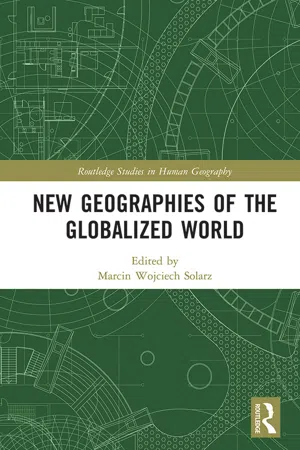Geography
Closing the Development Gap
Closing the development gap refers to efforts aimed at reducing disparities in economic development and living standards between different regions or countries. This involves implementing policies and initiatives to address issues such as poverty, inequality, and access to resources and opportunities. The goal is to promote sustainable development and ensure that all people have the chance to thrive and prosper.
Written by Perlego with AI-assistance
Related key terms
1 Key excerpts on "Closing the Development Gap"
- eBook - ePub
- Marcin Wojciech Solarz(Author)
- 2018(Publication Date)
- Routledge(Publisher)
The frequent outcome of such an approach is that little attention is paid to regional and local disparities. This can be a source of misleading results in studying global development, since the main feature of the last quarter century is rather the existence of contradictory trends on various geographical scales (Smith 2008). While international inequalities have been tending to decrease, the gaps between regions are on the increase in many countries. This is true on the one hand for less developed countries, where, as Ravallion and Chen (2012) show, inequality in per capita income significantly decreased between 1980 and 2005, while intranational disparities have risen. Similar tendencies can be found in the European Union, where gradually reducing national differences are mainly due to robust growth in more competitive regions, usually metropolitan and/or relatively close to the core economies of the EU, which in turn has led to a deepening regional gap (Puga 2002; Petrakos, Kallioras and Anagnostou 2011; Smętkowski and Wójcik 2012). Another typical example is China, where unequally allocated state investments in favour of more developed provinces and higher economic growth at the national level also massively propelled increasing regional disparities for several decades, until a gradual turn began in the 2000s (see Box 2.1). Fourth, a rich literature exists concerning increasing socio-spatial inequality in urban contexts in the form of neighbourhood segregation and unequal access to public services and even to public spaces (Gyuris 2017). This is a common tendency in most cities of both the global North and global South, also fuelled by urban policies which have been implemented globally and adopted in very diverse local contexts in order to attract private investment to compensate for the decline in public (i.e. state) funding (Peck and Theodore 2010)
Learn about this page
Index pages curate the most relevant extracts from our library of academic textbooks. They’ve been created using an in-house natural language model (NLM), each adding context and meaning to key research topics.
